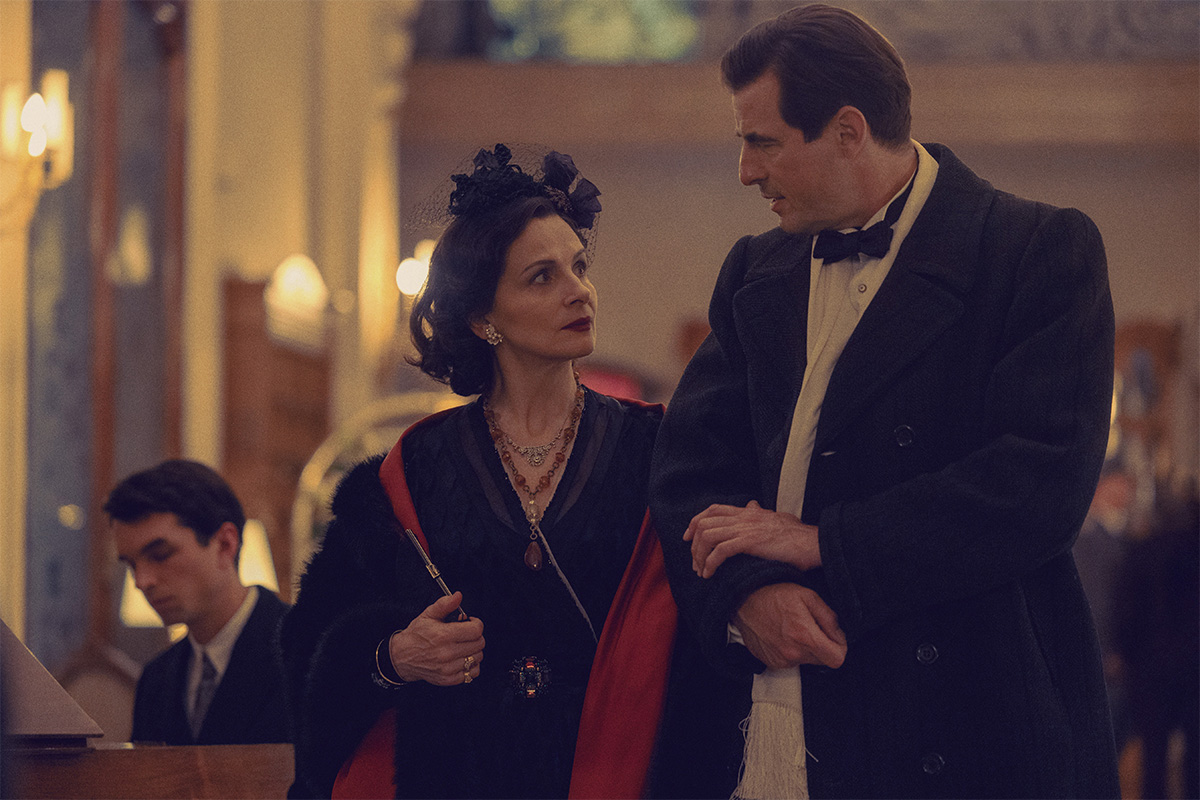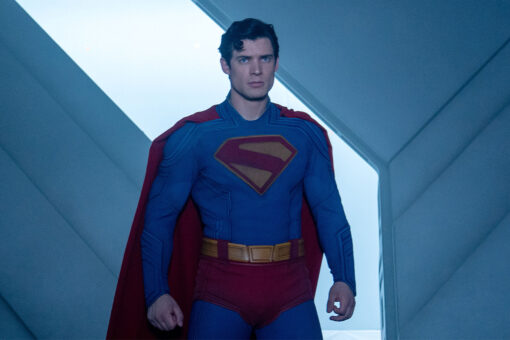In an early scene of the first episode of “The New Look,” it’s 1955 and a young couture student at the Sorbonne steps up to the microphone during a Q+A with fashion designer Christian Dior.
“Monsieur Dior, is it true that during the German occupation of Paris Coco Chanel closed her aetelier and refused to design dresses for the wives of Nazis while you kept designing and making money?,” she asks.
“There is the truth. But there is always another truth that lives behind it,” Dior responds, wisely.
Suddenly, there’s a voice from the peanut gallery. “Yeah, tell us the truth about how Chanel was a Nazi! Tell us!”
It’s me, I’m the voice. It’s 2024, I’m an associate editor at a Jewish pop culture site and I’m badgering my own computer screen.
A few days earlier I had received screeners for Apple TV+’s “The New Look,” a drama series which purported to show how Christian Dior and his colleagues survived World War II and launched modern fashion onto the world. Though I know little about Christian Dior, I am versed in Coco Chanel’s well-documented history as a Nazi collaborator and antisemite, and was intrigued by how the show will approach Chanel’s story.
After watching the show’s entire 10 episodes, mouth mostly agape, I got my answer: Apparently, “The New Look” doesn’t deem Coco Chanel’s Nazi collaborator status as the truth. Rather, her involvement with the Third Reich is portrayed as incidental, unwilling participation at worst and at best is a framework by which Chanel can level the playing field of the boys’ club fashion industry and become the girlboss she was destined to be. “The New Look” does all this after displaying an “Inspired by True Events” title card before every episode. Critics have described the show as “baffingly bad,” and “absurd to the point of insult,” and criticized Chanel’s narrative as “flat-out revisionist.” I agree.
But let me briefly start with the good. The performances from Ben Mendelsohn (Christian Dior), Maisie Williams (Catherine Dior), John Malkovich (Lucien LeLong) and yes, even Juliette Binoche (Coco Chanel) are compelling. So is the story of Dior’s unexpected rise to the top of French fashion; particularly the thread which follows him trying to simultaneously survive as a gay man in Nazi-occupied France and rescue his beloved sister Catherine, a member of the French Resistance who is caught, tortured and sent to a concentration camp. (The show’s treatment of Catherine, for whom Dior named his signature perfume Miss Dior, is relatively accurate.)
The show’s music, produced by Jack Antonoff, is also lovely, employing artists like Lana Del Ray and Florence Welch to sing covers of period-appropriate songs. “What I wanted to capture with the music was that whatever humans are going through, whatever joys or horrors, they feel the need to create. In this case, these designers made fashion in the face of an occupation,” Antonoff told the New York Times at the show’s premiere party. Then, Antonoff opened his Martin Greenfield jacket and pointed to his name on the label.
“He was a Holocaust survivor,” Antonoff said of Greenfield, a 95-year-old who survived Auschwitz and went on to become a master tailor. “I’ve worn his suits for a while now. Wearing his suits always feels resonant for me.”
It’s the only meaningful commentary about the Jewish experience of the Holocaust I’ve seen in relation to “The New Look.” Which leads me to the bad…
In the first three episodes, Coco Chanel’s involvement with the Nazis is continuously explained away. “The New Look” introduces us to war-time Coco Chanel in 1943, in the dead of night. She’s desperately invoked the help of her Nazi-collaborating friend Baron de Vaufreland to help secure the release of her nephew Andre from a German prisoner camp for POWs. It’s through this interaction that she comes to meet and become involved with Nazi spy Baron Hans Günther von Dincklage aka “Spatz.” Sure, it’s a reasonable explanation and it’s somewhat based in reality. Chanel’s nephew was a French POW and it’s likely she did first get involved with the Nazis to free him. However, she did so closer to 1941, when she first began her relationship with Spatz. Still, Chanel biographer Rhonda Garelick concluded in her 2014 book “Mademoiselle” that Chanel likely believed in the Nazi cause, writing “Chanel went beyond the call of family duty in her efforts for the Nazis.”
This is a far cry from what’s portrayed in “The New Look.” Instead of purposefully living in the Ritz Hotel with her Nazi spy and lover, Coco just so happens to be living in the same place where the German High Command hold their headquarters. When she ends up dining with Heinrich Himmler, the architect of the Holocaust, it’s purely an accident. It wasn’t her idea to invoke the Aryan Laws to try to steal ownership of Les Parfums Chanel from her Jewish business partners the Wertheimers. And even if it were, she needed the money and they were basically persecuting her and treating her badly because she’s a woman. Becoming an agent of Nazi intelligence (Agent F-7124, codenamed “Westminster” to be exact) and participating in Operation Modelhutt was something Chanel was forced into. And when Spatz takes her “shopping” to the apartment of a Parisian Jewish family who presumably either fled for their lives or were imprisoned in a concentration camp, her decision to ally herself with her German lover isn’t for mutual benefit, it’s seemingly naive. There are more offensive examples in episodes of “The New Look” that are still under embargo (not yet released to the public), so we’ll just leave it at that.
Like I said, it’s well-documented that Coco Chanel was a Nazi collaborator and antisemite. Her general aura is best captured by this sentiment from a 2011 edition of the New York Times: “Gabrielle Chanel — better known as Coco — was a wretched human being. Anti-Semitic, homophobic, social climbing, opportunistic, ridiculously snobbish and given to sins of phrase-making like ‘If blonde, use blue perfume,’ she was addicted to morphine and actively collaborated with the Germans during the Nazi occupation of Paris.” Besides the lack of sympathy for those dealing with drug addiction, I couldn’t have said it better myself.
So why do the creators of “The New Look” revise her history? Co-creator Todd Kessler gives us a couple of clues. In an interview with the BBC, Kessler said, “The aim was to portray the spirit of Coco Chanel as accurately as possible.” Yet, on the other hand, he also explained, “It’s not inspiring to write villains or heroes. What’s inspiring is to explore the grey, because that brings me closer to an understanding of the characters and the decisions they had to make.”
I cannot think of a person or character less deserving of nuance. First, because I think that Chanel’s motives were clear. And second, because the effect it has on the show is unsettling. Are we supposed to feel sympathy for Coco Chanel? Are we supposed to see the choices she made as equal to the choices that Christian and Catherine Dior made to survive the war? “The New Look” seems to suggest yes. More than that, it seems to imply that her actions are forgivable because Chanel happens to be an important figure in modern fashion and a woman.
From the perspective of this Jewish woman wearing sweatpants, I can confidently say they are not.



